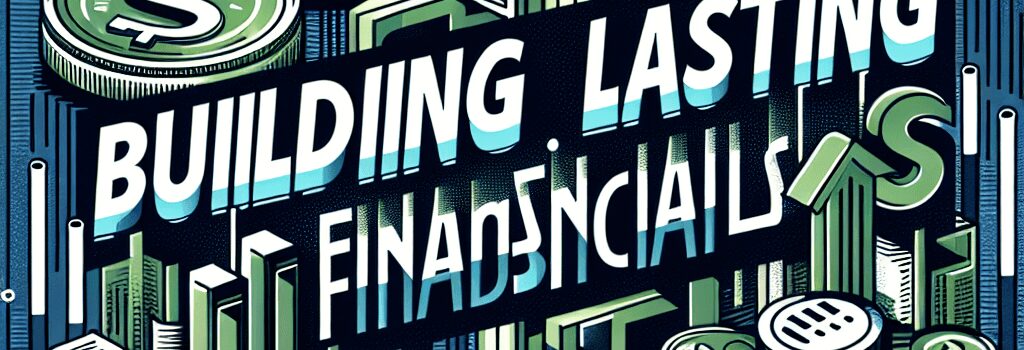Building Lasting Financial Products

As a product builder with decades of experience in retail banking and fintech innovation, I’ve witnessed countless promising ideas soar from zero to hero in weeks—then crash and burn within months. Financial products are high stakes: with users’ hard‑earned money on the line, expectations sky‑high, and a saturated market, it’s easy to default to a ‘feature first’ mentality. Yet throwing every feature into the mix without clear prioritization is a recipe for disaster.
The Pitfalls of Feature‑First Development
Whether you’re migrating paper‑based loan approvals onto a mobile app, integrating Open Banking APIs, or building a new robo‑advisor from scratch, the temptation to add every conceivable feature can be overwhelming. You hear demands for granular budgeting tools, real‑time FX rates, chatbots, voice authentication—and before you know it, your roadmap looks like a function matrix from a dozen different departments.
Security teams flag unvetted integrations. Engineers wrestle with unpredictable latency spikes in production. Product managers find that a hard‑won feature sees 10% adoption, far below the break‑even point. This “Columbo Effect”—the endless “just one more thing”—dilutes focus, inflates technical debt, and erodes user trust.
Embracing MVP to Find Your Bedrock
The concept of the Minimum Viable Product (MVP), popularized by Eric Ries and practiced at 37signals, isn’t about shipping a half‑baked product; it’s about delivering the smallest set of features that users will love and sustain. By focusing on core journeys—balance checks, bill pay, account notifications—you lay the foundation of what I call bedrock.
In retail banking, account servicing tasks are high frequency: check balance, authorize payments, view transaction history. These must be fast (sub‑200ms API response times), available (>99.9% uptime), and secure (PCI DSS and ISO 27001 compliant). Nail these, and you earn users’ trust. Stretch too far into novel features—like AI‑driven investment advice—without proven infrastructure and clear ROI, and you risk catastrophic failure.
Practical Strategies for Building Financial Products That Stick
- Define a Clear Why: Align your mission with both business objectives (e.g., reducing call‑center volume by 30%) and user needs (e.g., simplify day‑to‑day money management). Document a Lean Canvas or PRD that prioritizes those metrics.
- Single Feature Obsession: Start with one must‑have capability. Use A/B testing frameworks (e.g., Optimizely, LaunchDarkly) to validate impact on key metrics before rolling out nationally.
- Opt for Simplicity: Leverage cloud‑native services—AWS RDS for relational data, Amazon Cognito for authentication, Azure Functions or Google Cloud Run for event‑driven logic—to reduce operational overhead.
- Continuous Iteration: Adopt a GitOps workflow. Automate CI/CD pipelines (Jenkins, GitHub Actions) to push daily commits. Monitor in real time with Prometheus/Grafana and collect user feedback via in‑app surveys or NPS tools.
- Field‑First Testing: Conduct regular usability sessions with a diverse user panel. Combine quantitative telemetry with qualitative interviews to uncover hidden pain points and iterate rapidly.
Technical Architecture: Scalability and Resilience
Building bedrock requires an architecture that can scale with user growth and recover from failures automatically:
- Microservices: Decouple payments, notifications, and user profiles into separate services behind an API gateway (e.g., Kong, AWS API Gateway).
- Container Orchestration: Deploy on Kubernetes or AWS EKS with horizontal pod autoscaling (HPA) to handle peak loads such as payroll days.
- Data Store Strategy: Use PostgreSQL for transactional consistency, Redis for session caching, and a time‑series database (e.g., InfluxDB) for real‑time metrics.
- Event‑Driven Workflows: Implement Apache Kafka or AWS EventBridge to achieve eventual consistency, decouple services, and support cross‑product integrations.
Regulatory Compliance and Security Best Practices
Compliance isn’t an afterthought—it’s fundamental bedrock. Key considerations include:
- Open Banking & PSD2: Provide secure API access with OAuth 2.0 / OpenID Connect. Implement API throttling and PKCE flows to prevent abuse.
- Data Encryption: Enforce TLS 1.3 in transit; AES‑256 at rest. Maintain key rotation policies and HSM integration for cryptographic operations.
- Identity and Access Management: Enforce least‑privilege via IAM policies or RBAC. Use multi‑factor authentication (SMS OTP, TOTP) for high‑risk operations.
- Continuous Security Testing: Integrate SAST (e.g., SonarQube), DAST (e.g., OWASP ZAP), and periodic third‑party pen tests into your CI/CD pipeline.
Leveraging AI for Personalization and Risk Management
AI and machine learning can bolster your bedrock by:
- Personalized Insights: Train recommendation models on transaction data to surface tailored budgeting tips. Use Amazon SageMaker or TensorFlow Extended for model lifecycle management.
- Fraud Detection: Deploy real‑time anomaly detection with auto‑encoders or random forest classifiers. Integrate with streaming data in Kafka and use Redis for fast feature lookups.
- Chatbots & Virtual Assistants: Leverage LLMs (e.g., OpenAI GPT via AWS Bedrock service) to handle low‑risk queries, freeing human agents for complex support.
The Bedrock Paradox
Focusing on bedrock means trading some short‑term growth for long‑term stability. By investing in a single core journey, you create compounding returns: every reliability improvement and UX tweak enhances daily usage, trust, and word‑of‑mouth referrals. Over time, these gains dwarf any one‑off feature release.
As product visionary Peter Drucker said, “The best way to predict the future is to create it.” Identify your bedrock, build it with discipline, and iterate relentlessly—only then will your financial product endure.